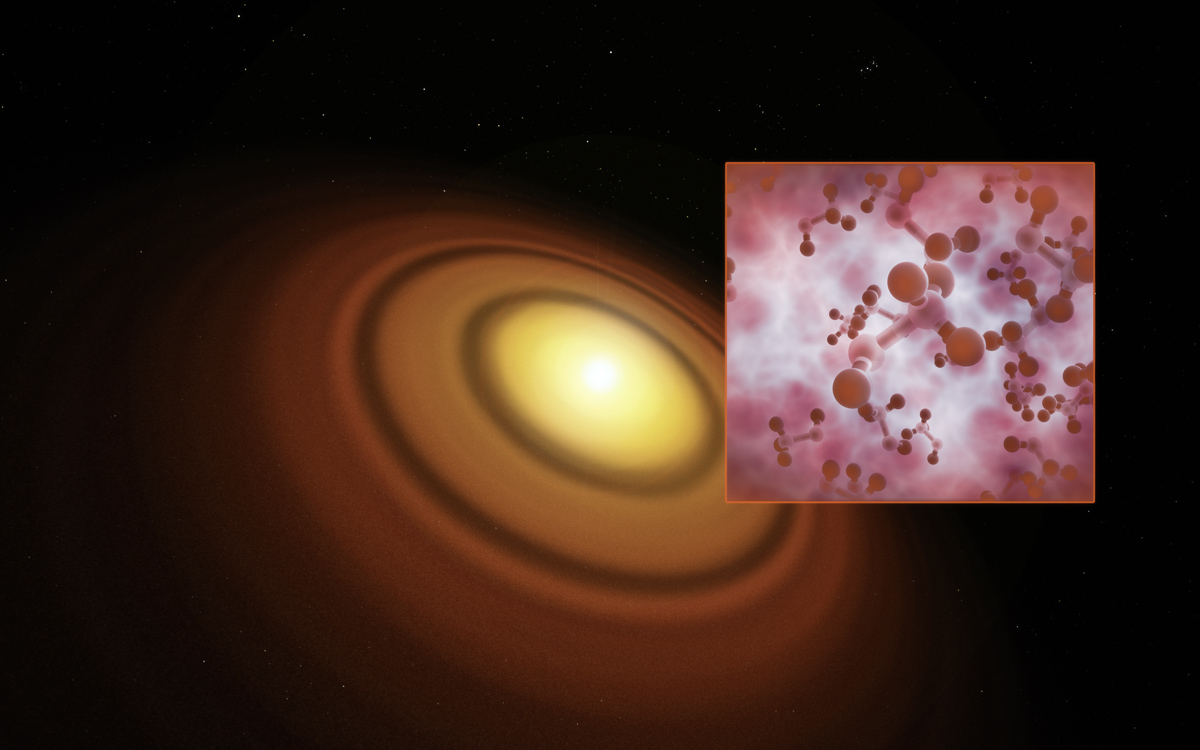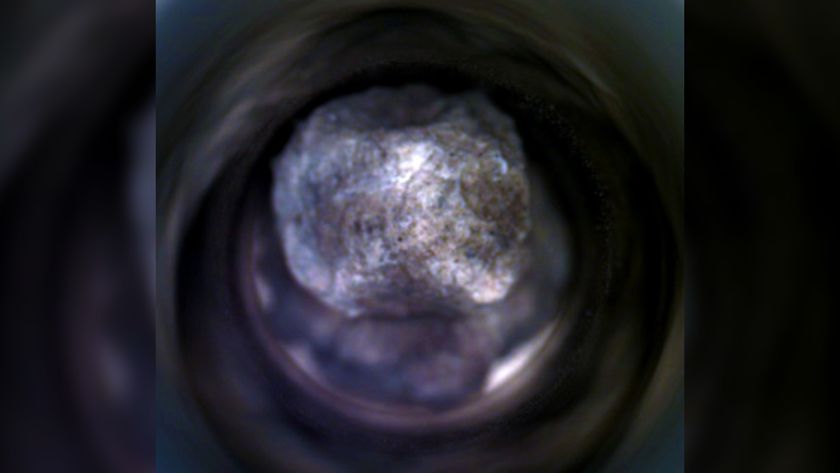Methanol, a Building Block of Life, Found Around Newborn Star for 1st Time

Some of the building blocks of life are likely present on many planets from day one, a new study suggests.
Astronomers using the Atacama Large Millimeter/Submillimeter Array(ALMA) in Chile spotted methanol in the dusty disk around a newborn star, marking the first time this carbon-containing organic molecule has been spotted in a planet-forming environment.
"Methanol in gaseous form in the disk is an unambiguous indicator of rich organic chemical processes at an early stage of star and planet formation," study co-author Ryan Loomis, of the Harvard-Smithsonian Center for Astrophysics in Cambridge, Massachusetts, said in a statement. "This result has an impact on our understanding of how organic matter accumulates in very young planetary systems."
ALMA — a collection of radio telescopes high in the Andes Mountains of northern Chile — looked at the sun-like star TW Hydrae, which lies about 170 light-years from Earth.
Astronomers think TW Hydrae is about 80 percent the mass of the sun, and much younger — barely 10 million years old. (The sun formed about 4.6 billion years ago.) TW Hydrae is surrounded by a disk of dust and gas that could one day form a planetary system.
ALMA mapped the chemical composition of the disk and found methanol, also known as methyl alcohol (CH3OH). Methanol is a relatively simple organic molecule, but it's one of the largest molecules ever found in a protoplanetary disk, researchers said.
Methanol forms as a solid (an ice) on the surface of grains in frigid dust clouds. That means the dust grains are releasing it into space, study team members said.
Get the Space.com Newsletter
Breaking space news, the latest updates on rocket launches, skywatching events and more!
The methanol was found in a region where comets may be forming, some 30 to 100 astronomical units (AU) out from TW Hydrae. (One AU is the distance from Earth to the sun — about 93 million miles, or 150 million kilometers.)
Comets might be one source of the organic molecules that formed the basis of the first self-replicating molecules on our own planet, so the new results could have bearing on the origins of life on Earth, study team members said.
The study was published in The Astrophysical Journal Letters on May 13.
You can Follow Jesse Empsak @Mad_Science_Guy. Follow us @Spacedotcom, Facebook or Google+. Originally published on Space.com.
Join our Space Forums to keep talking space on the latest missions, night sky and more! And if you have a news tip, correction or comment, let us know at: community@space.com.

Jesse Emspak is a freelance journalist who has contributed to several publications, including Space.com, Scientific American, New Scientist, Smithsonian.com and Undark. He focuses on physics and cool technologies but has been known to write about the odder stories of human health and science as it relates to culture. Jesse has a Master of Arts from the University of California, Berkeley School of Journalism, and a Bachelor of Arts from the University of Rochester. Jesse spent years covering finance and cut his teeth at local newspapers, working local politics and police beats. Jesse likes to stay active and holds a fourth degree black belt in Karate, which just means he now knows how much he has to learn and the importance of good teaching.


